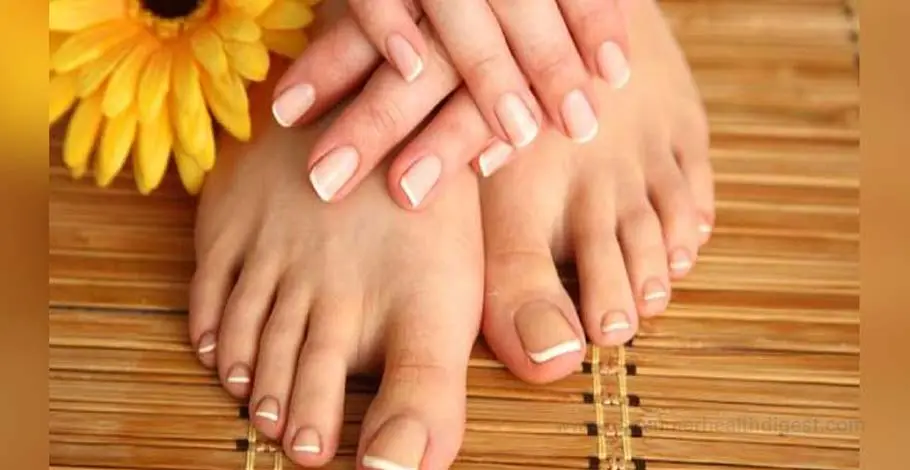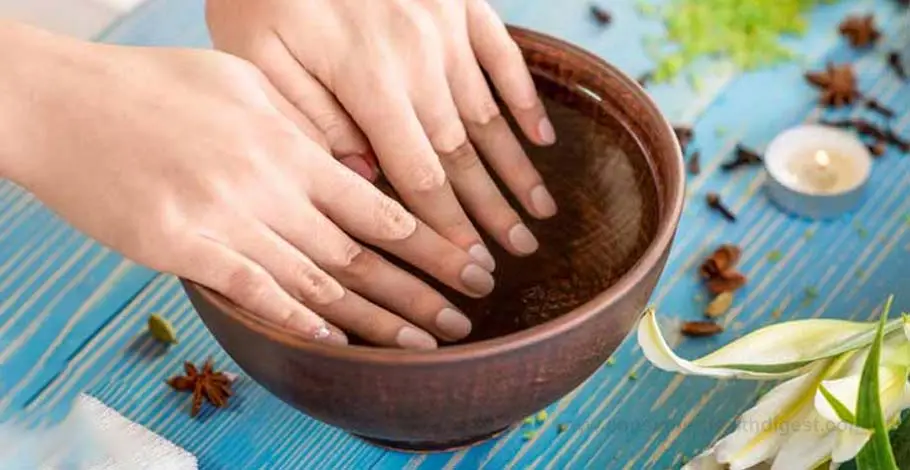In This Article
For many people, taking care of their fingernails is about aesthetics. Your fingernails are noticeable most of the time, and during the summer you probably wear shoes that show off your toenails, too.

What you might not realize, however, is that the condition of your fingernails affects much more than how you look.
Your fingernails are a vulnerable part of your body and are susceptible to a number of diseases and unhealthy conditions.
When your fingernails are unhealthy, it also tends to be a sign that another internal health condition is present. Take care of your fingernails and watch out for these
11 Common Nail Problems:
#1. Nail Clubbing
Occurring gradually over time, nail clubbing occurs as the distal portion raises up and rounds out. As a result, the tip of the finger and the fingernail appear swollen and rounded. The bed beneath the nail may not support the nail as firmly, causing the nail to be looser and to spring almost like a sponge when pressed.
Nail clubbing can be a sign of:
- Pulmonary Disease
- Cardiac Disease
- Systemic Disorder
#2. Hangnails
Although a bit of a misnomer, hangnails occur when the skin along the edge of the nail tears or is otherwise damaged. Sometimes this causes bleeding and can cause persistent, low-grade pain. Simply wash a hangnail and apply an antibiotic cream to protect against infection. The skin will heal itself.
#3. Nail Infection

Finger Nail Infection
One of the most common nail problems, nail infections occur when dirt and bacteria get under the fingernail. Infections that reach the nail bed can be painful and can result in swelling or puss pockets forming near the nail.
Often nail infections can be prevented or treated at home with only minor discomfort. It is best to avoid altering the nail and to avoid attempting to remove the visual portion of the infection with clippers or other tools [1]. The nail should simply be soaked in warm water multiple times a day. If the finger nail infection continues, see a doctor for medication.
#4. Split or Peeling Nails
If any of your nails split or peel, you will notice. The condition may be uncomfortable and tends to be obvious. Generally, split or peeling nails occur when the nails are too dry and brittle. This is common and if often caused in part by immersing and then drying the hands (and of course, nails) too frequently.
When the painted or polished fingernails are decorated, removed, and redecorated often it can have the same drying effect. Be gentler when cutting, washing, and painting your nails. Use gloves when immersing your hands in hot water as well.
#5. Psoriasis Nails
Caused by an overactive immune system, psoriasis can spill over into your nails and create changes in color, thickness, and the surface of your nails. You may notice pitting or depressions in your nails [2].
#6. Yellow Discolored Nails
More common in the toenails fungus, discoloration that appears to be yellow is generally the result of an underlying medical condition. There are many toenail fungus treatments for yellowed nail [3] issues since they are quite common.
Yellow nails can be caused by:
- Diabetes
- Chronic Swelling
- Fungal Infection
- Weakened Immune System
- Circulation Problems
If your nails appear yellow and are also growing brittle, cracked, or dry, you should see a doctor to rule out conditions like these. Of course, your yellow nails may also be the result of a nail polish you have recently removed, in which case you should simply wash them a few times.
#7. Beau's Lines
Named after the man who first documented them, Beau's lines are linear depressions in the nails [4]. They run horizontally and move up from the base of the nail as it grows outward. You can measure how long the lines have been there based off of how far up the nail they are.
Unfortunately, Beau's lines are symptomatic of a number of disorders and are best removed by simply taking care of the underlying condition. Common underlying disorders for Beau's lines include:
- Malnutrition
- Liver Disease
- Heart Attack
- Poorly Managed Metabolic Process (like Diabetes)
#8. Nail Fungus
A large number of people have nail fungus at least once in their lifetime. Fungus is found and grows all over, so your hands and feet are exposed to it naturally [5]. The trouble with fungus affecting your nails can be minimal, or it can grow to be a greater issue.
If you just have a spot or two of fungus under your nails, then all you probably need to do is wash in warm water regularly until it goes away. As your nails grow, they will likely push the fungus out anyway.
However, if the fungus appears to grow or spread, you may want to take further steps. When the fungus begins to alter traits of your nails, like their color or thickness, see a doctor to learn about your options before the infection becomes serious.
#9. Onycholysis
Also known as lifted nails, onycholysis is when the nail separates from the nail bed, raising itself up away from the finger. Often a painful condition lifted nails occur for a variety of reasons. Sometimes nails lift as a part of other issues, like a fungal infection or psoriasis. Often, nails lift in reaction to excessive hardening or over-exposure to chemicals (like those used in nail polishes.)
#10. Half and Half Colored Nails
Nails that are colored half one color and half another are generally a sign that something related to a change in your overall health has occurred inside of the body. See a doctor, as half and half colored nails can be a sign of anemia, systematic disorders, and more [6].
#11. Bluish Nails
Any discoloration of the nails is a hint that something isn't quite right internally. Bluish nails are one of the most common color changes, though, and are often very treatable [7]. Nails begin to appear bluish when there are issues in the blood or in the circulatory system. A doctor can usually diagnose such issues quickly and provide treatment, which then gets your nails back to normal.
7 Sources
We review published medical research in respected scientific journals to arrive at our conclusions about a product or health topic. This ensures the highest standard of scientific accuracy.
[1] Nail fungus: Overview: https://www.ncbi.nlm.nih.gov/books/NBK279547/?report=reader[2] Nail Psoriasis: A Review of Effective Therapies and Recommendations for Management: https://www.ncbi.nlm.nih.gov/pmc/articles/PMC8163925/
[3] Yellow Nail syndrome: https://rarediseases.org/rare-diseases/yellow-nail-syndrome/?filter=ovr-ds-resources
[4] Beau's Lines: Symptoms & Signs: https://www.medicinenet.com/beaus_lines/symptoms.htm
[5] Nail fungus: https://www.mayoclinic.org/diseases-conditions/nail-fungus/symptoms-causes/syc-20353294
[6] Half and half nail: https://www.ncbi.nlm.nih.gov/pmc/articles/PMC4252964/#!po=16.6667
[7] Discoloration of nail beds and skin from minocycline: https://www.ncbi.nlm.nih.gov/pmc/articles/PMC3033929/#!po=16.6667







 This article changed my life!
This article changed my life! This article was informative.
This article was informative. I have a medical question.
I have a medical question.
 This article contains incorrect information.
This article contains incorrect information. This article doesn’t have the information I’m looking for.
This article doesn’t have the information I’m looking for.